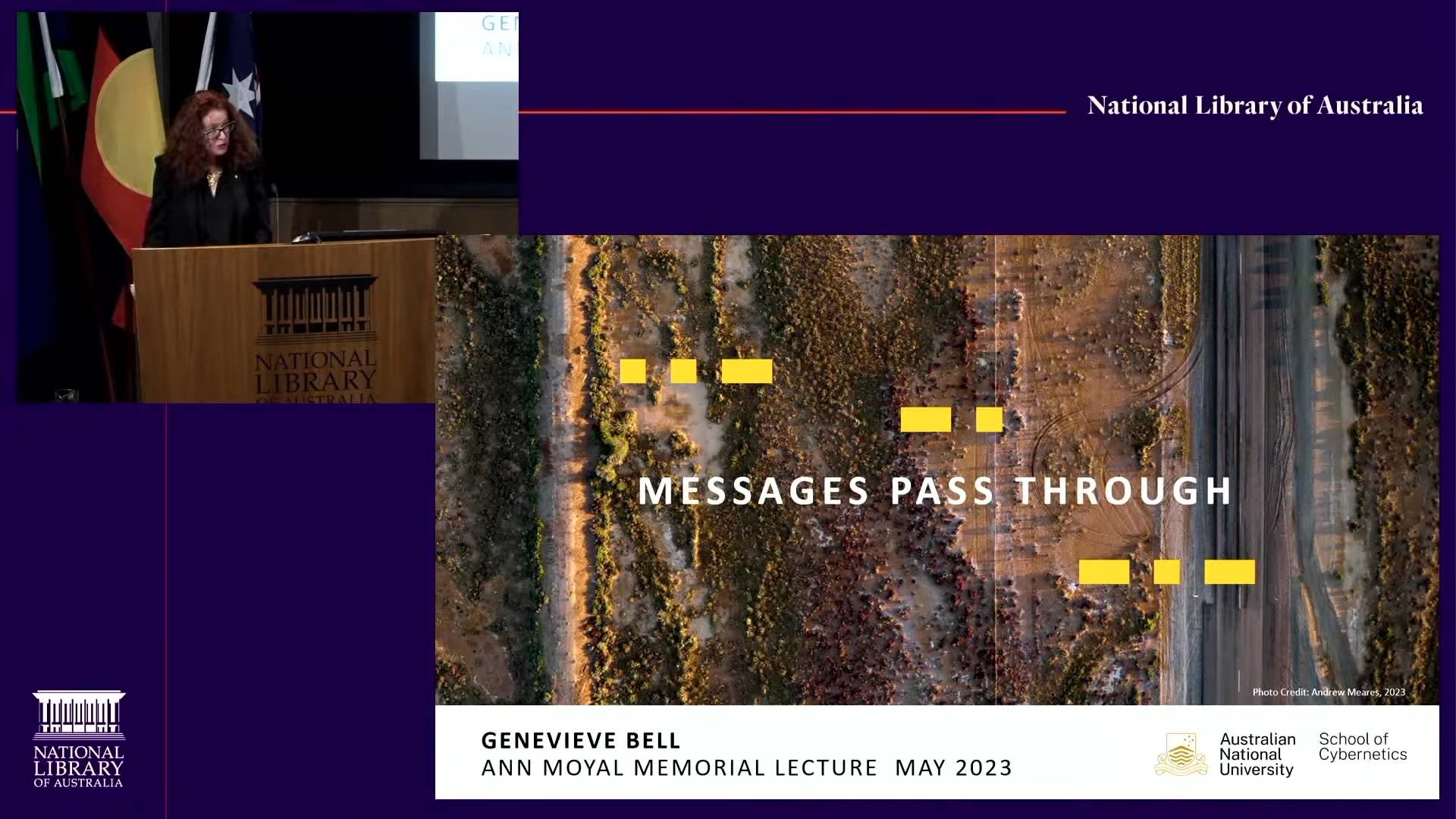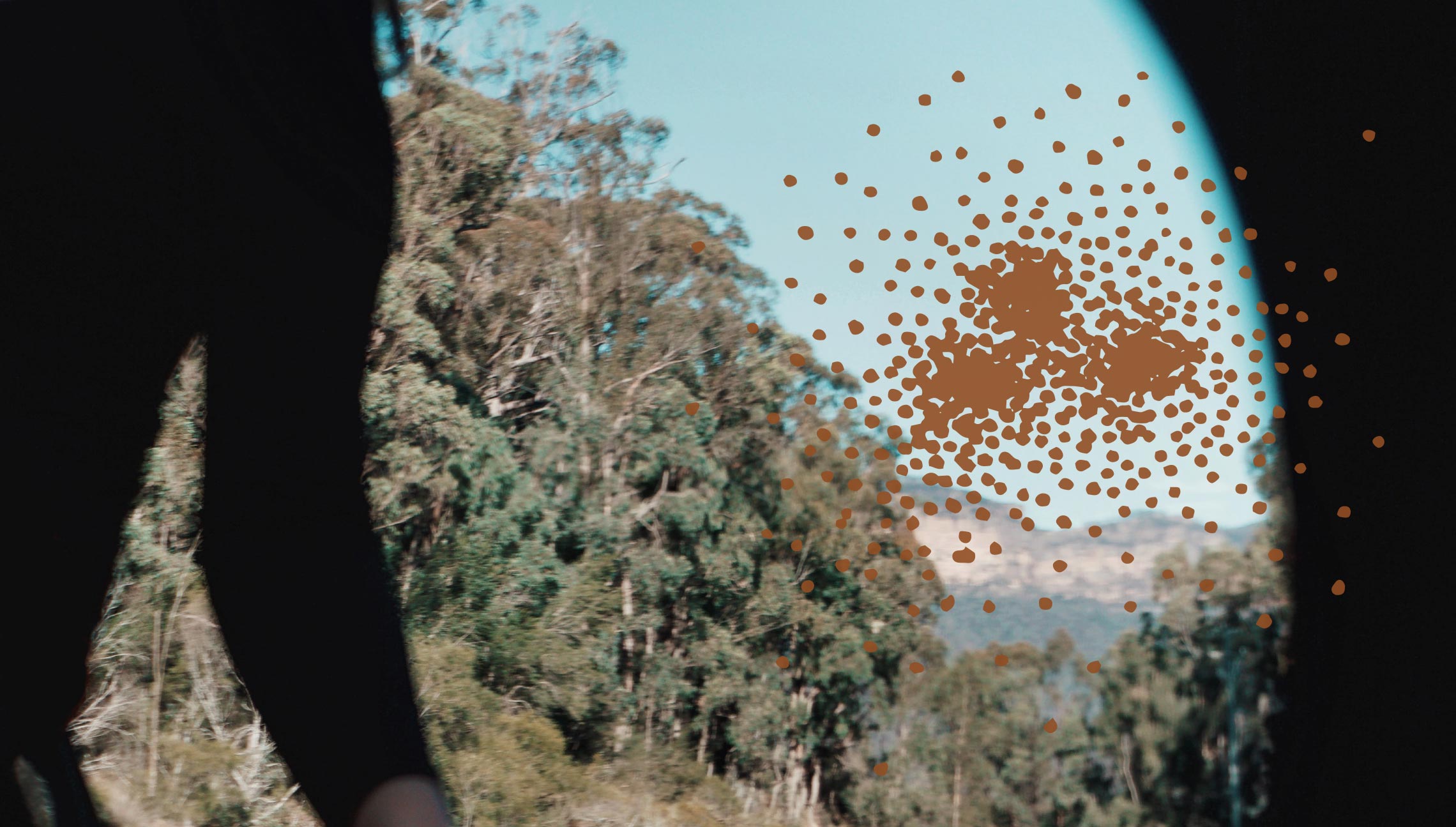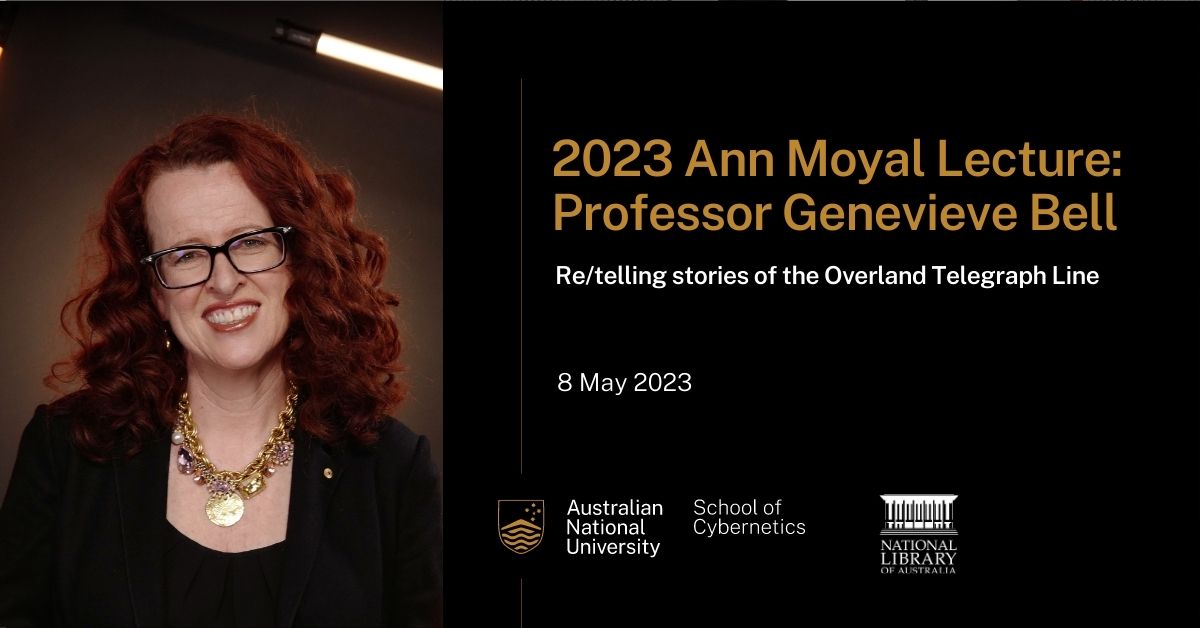8 May, 6–8PM This lecture was co-organised with the National Library of Australia.
Ann Moyal Lecture#
Dr Ann Moyal was one of Australia’s most distinguished historians of science and technology. It was Ann’s extensive work that influenced Director Genevieve Bell in her role at Intel, and it was Ann’s history of Australian telecommunications that Prof. Bell used as a jumping off point for her lecture on 8 May to a sold-out audience at the National Library of Australia.
The lecture marked what will be an annual occurrence, one that invites a speaker to focus on a contemporary question drawing on fields of knowledge spanning science, environment, ecology, history, anthropology, art, and technological change.
Prof. Bell shared a new set of stories about the Overland Telegraph Line with the audience, stories that examine it as a complex cybernetic system, and the questions we must ask of any large system and its unintended consequences, regulations, impact, power, control and inequity.
Lecture highlights#
Citing Ann Moyal’s published work, Clear Across Australia, Prof. Bell reflected on it as a comprehensive account of Australia’s telecommunications history, of which the Overland Telegraph Line, built from Adelaide to Darwin, played a significant role.
“Of course, the Overland Telegraph Line was always and already more than just a staggering engineering feat. It was a complex dynamic system that comprised the latest technology – telegraphy – spanning the breadth of Australia with its diverse ecological niches, controlled by a complex of regulator and governmental organizations, and staffed and supplied by overlapping networks and infrastructures, connecting up to global networks of equal complexity and dynamism.”
She then explained how past decisions and technologies continue to frame our daily lives, citing how the introduction of telegraphy remapped ideas about time, distance and even social relationships, fundamentally impacting the lives of the First Nations people through whose country the Overland Telegraph Line flowed.
“Histories are more than just backstories. They are backbones and blueprints and maps to territories that have already been traversed. Knowing the history of a technology, or the ideas it embodies, can provide better questions, reveal potential pitfalls and lessons already learned, and open a window onto the lives of those who learned them.”
Reflecting, critically observing, and learning from the past is a core element of what we teach our students at the School of Cybernetics.
“We teach our students to pay attention to history: to explore the people, and places and moments that gave rise to current large scale technical systems, in so doing, helping to remind ourselves that most technologies came from somewhere and someone. And that those people and places are as important to understanding the system as the components itself. This cybernetic approach to systems helps bring the relationships and dynamics between technologies, humans and the places in which they enact complex systems into stark relief, and always helps destabilise the narratives of neat, neutral engineering accomplishments.”

Professor Bell offered a different perspective on how we apply analysis and learning from our histories. “So how and why might we unfold a different kind of analysis of the Overland Telegraph Line?”
“In unfolding such a story of a large scale, complex, system, we might find new questions to ask of our current world and the systems with which we contend, and those which we imagine to build. Indeed, it is my hope that such an account could offer both pre-histories of our presents and parables that might illuminate our futures.”
“The history of Australia’s telegraph line is not a prehistory of today’s technical world per se; it is not a prediction either. Much like Moyal herself, I do believe that such histories help inform our understanding of present versions of those systems, as well as provide critical frameworks within which to explore present and future systems.”
Genevieve concluded her lecture by illuminating just how much today’s digital world owes to telegraphy.
“Throughout the nineteenth century, governments and corporations designed, built, refined, and evolved whole-of-country and whole-of-world information and communication systems. These systems – railways, mail, telegraphy, electricity, telephony – made possible the creation, circulation, and curation of new forms of information and data. These same systems also enabled different kinds of business models, structures of corporations and capitalism, as well as ideas about government, empire, and power. I think about these connections a lot, these older histories of my country and the stories that thread through it. And the histories of these technologies are more than just backstories of a nation. They are backbones and blueprints and maps to territories that have already been traversed – by Kukari and Yurkungangku and Babbage and Todd and perhaps also by us.”
This lecture was co-organised with the National Library of Australia.
Speaker Distinguished Professor Genevieve Bell#
Professor Genevieve Bell is the Director of the School of Cybernetics, Florence Violet McKenzie Chair, and a Distinguished Professor at the Australian National University as well as a Vice President and Senior Fellow at Intel Corporation. She is a cultural anthropologist, technologist and futurist best known for her work at the intersection of cultural practice and technology development.

